Go Wireless
Note: I get paid commissions for purchases made through any links to Amazon products in this post.
Batteries
Wired
The Arlo Q camera also has a plan for recording around the clock footage. Unfortunately, there isn’t a way to record to a storage device/NAS on your home network, so I couldn’t go this route. The problem is that my Comcast internet account is capped at 300GB, so I would easily go over that cap with CVR (Constant Video Recording).
It makes some sense that the cameras store footage in the cloud. If you store recordings on a home network, the storage device could be stolen and you would be left without any footage of what happened. Of course, a criminal could cut the cable line before entering, so that is an issue with cloud only storage (though you could put a camera near your cable entry point), so there are downsides with either approach. I wish there was a way to make that decision myself and have separate options available. Record continuously to a NAS and only motion to the cloud would be ideal or record to both places simultaneously.
When I tested the camera using the audio sensor, it did work, but I noticed that the audio and video that were recorded weren’t in sync. Probably won’t matter if you are listening in on criminals that have broken into your home, but I would stick with FaceTime or Skype if I just wanted to video chat with someone in my living room. The speaker that you can access via the Arlo app works great, too.
Note: I get paid commissions for purchases made through any links to Amazon products in this post.
Privacy
However, despite this layer of security, I still don’t want security cameras in areas that I wouldn’t want seen by the public. For example, if I wanted to keep my bedroom secure, I might put a camera outside the window and in the hallway. This is just my own preference, but others will have to decide how comfortable they are with cameras showing their private areas (no pun intended).
The Setup
Below is a video related to setting up the wireless Arlos. ( I am not associated with the video, but it details the entire process). The Arlo Q is even easier to setup because it does not use the base station.
The App
The app will also allow you to schedule times that the cameras turn on and off. My schedule isn't consistent enough from day to day to be able to use the feature, but it might come in handy for some people.
One thing I really like about the app is the fact that it has the option to use TouchID. This is more secure than just telling it to remember the password and much more convenient than typing in the password each time I check my cameras.
IFTT - Automation
For example, if you have Hue bulbs, you can have them blink rapidly or come on when a camera senses motion. I like to listen to headphones in my office, so I have my office lights blink when the cameras on the porch sense motion. You can also have it turn on a Wemo switch when a camera senses motion, so you can use the feature even if you don't want to spend a lot of money on Hue lights.
Another cool feature is where you can set one camera to record when another camera senses motion. One of the issues with the cameras is that they sense motion faster when they are setup perpendicular to the pathway. My porch placement wasn't ideal, so I was often capturing motion too late and only seeing people walk away.
By putting another (A) camera in the pathway outside the porch and then telling the (B) porch camera to start recording when (A) camera sensed motion, it is now much better at recording people approaching the porch.
There are Alexa controls, sprinkler controls, and more in the IF app. I expect the list to grow as more connected devices are added.
Some of my complaints
My second issue is how the wireless Arlos sense motion. It often starts recording too late if they aren't in the ideal location. The other issue is that the wireless Arlo can't sense motion through windows like my IP cameras. They use small changes in heat to record, so insulated windows make that impossible. The wired Arlo Q uses changes in video frames to sense motion, but I still had issues recording through glass. I have read that it works if you put it right up against the window and you do not have night vision enabled, but that would defeat the ability to record at night, which I don't want to give up. Also, we have double windows, which may make it harder to capture motion.
Another small issue is the notifications aren't very informative compared to other options. My IP camera app has the option to send a photo to my watch with frames that are captured. This gives me the option to take a quick look at the notification, see that it is just a FedEx delivery, and go back to what I was doing. The Arlo notification tells you that there is motion on a camera, but you have to open the app to see what is happening. If it is currently recording, you have to go to the live camera, wait for it to start running, and then see what is happening. If the action is over, you need to wait for video to stop recording, then look at the video to see what set it off. Not ideal compared to a free IP camera app I use for my old cameras. Though, my IP app doesn't record video, it simply takes a bunch of photos, so it has its own set of issues.
The Wrap Up
Personally, I plan to add a few more cameras, but I still can't recommend them without reservations due to the requirement of using only Netgear's servers for all recordings. However, for my own use, that downside isn't enough to deter me from using them on my property.
Upsides:
Easy setup
Wireless option means they can be put anywhere
Full featured app
Wired Arlos can be controlled from the same app
If This Then That automation
Great picture quality
Free limited cloud storage up to 5 cameras
Geofencing option
Downsides
NetGear cloud is only storage option
Wireless Arlos can't sense motion through glass
Battery costs for wireless cameras
Monthly charge for going over 6 cameras


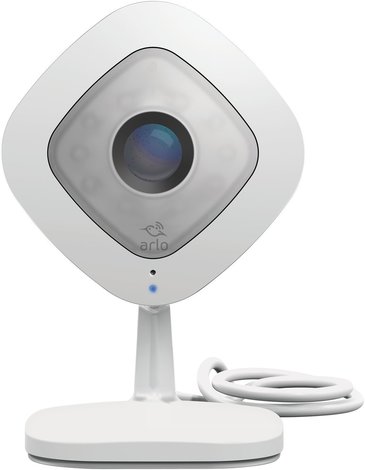
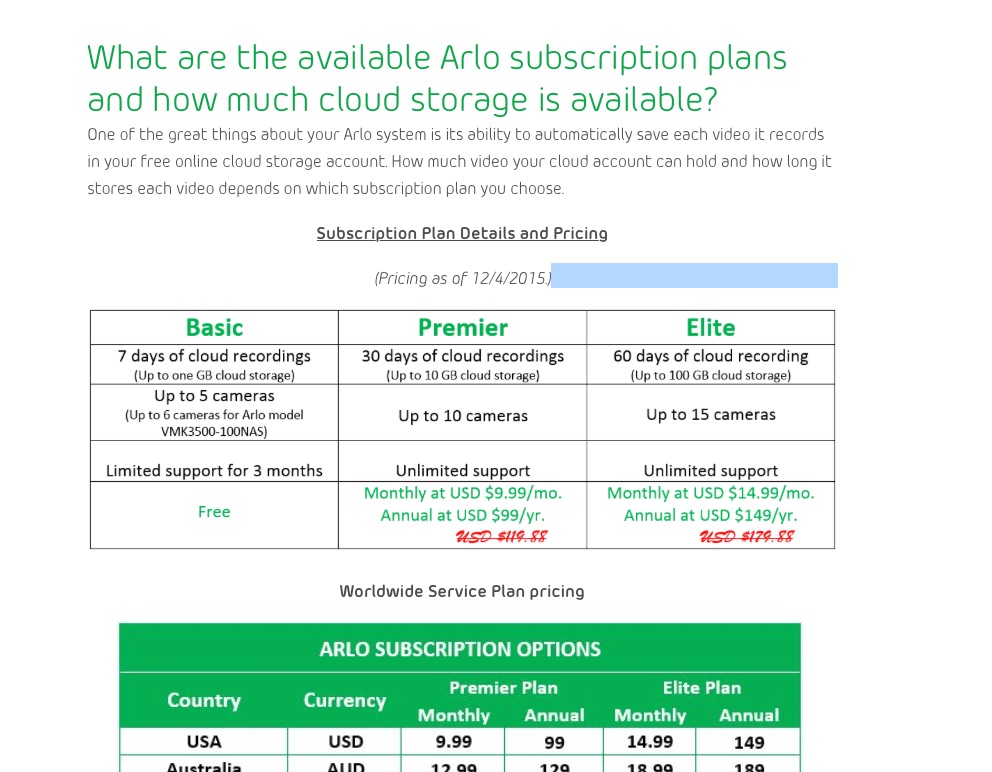
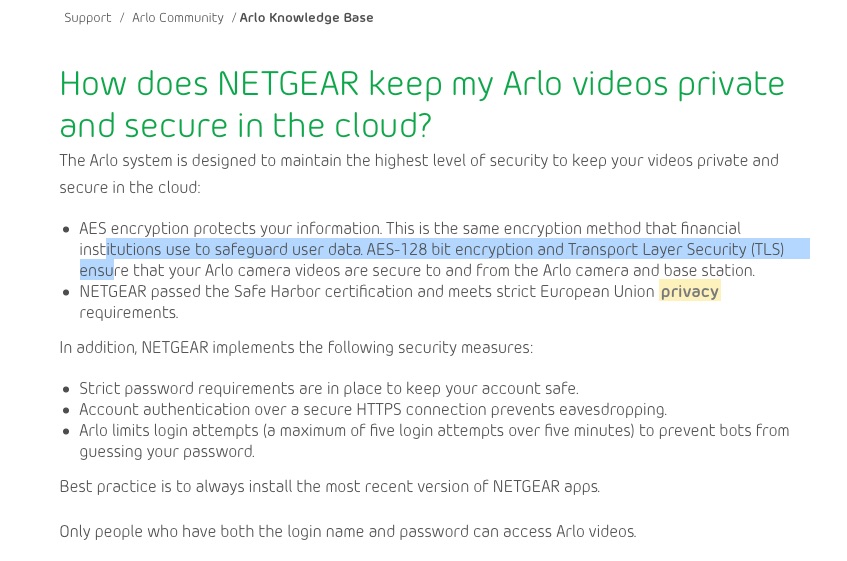

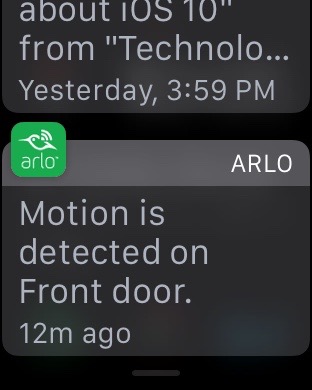

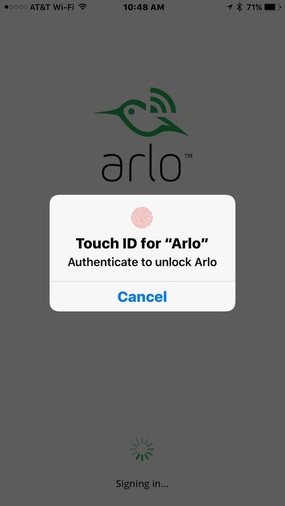


 RSS Feed
RSS Feed